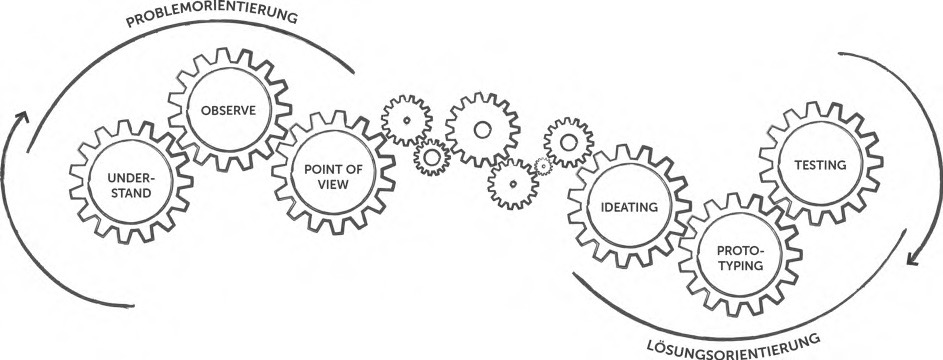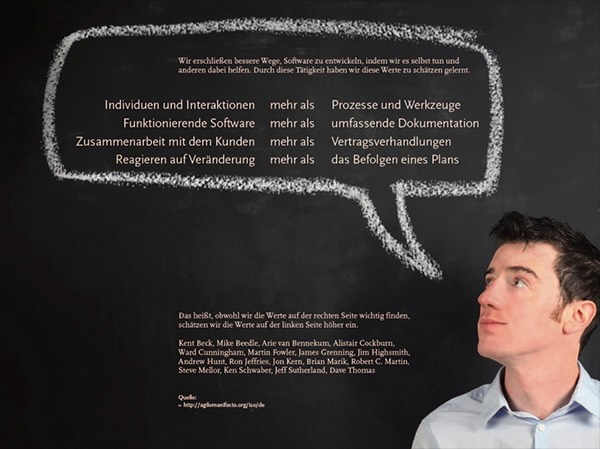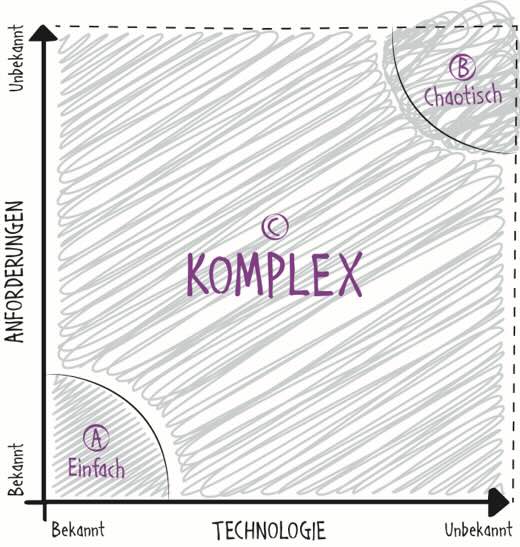- Friedrich Wilhelm Nietzsche, 1923 -
Even if this quote is now a little outdated, it has by no means lost any of its meaning. After all, innovation and creativity are more important than ever in our society. It may be that the goal today is not always to create the philosophically figurative dancing star, but to create new interfaces and products, for example. One challenge in today's creative creation process is that you have to develop closer to the customer than ever before and adapt quickly to the changing needs of the market.
In order to guarantee this added value, one method in particular has attracted the attention of industry in recent years: Design Thinking. This approach is characterized by the fact that it is intended to contribute to the development of new ideas by addressing problems from multiple perspectives. This method is also characterized by the principle of finding solutions that are convincing from the user's point of view. Design thinking is often applied in sprint form. This is an isolated setting that typically lasts 3 to 5 days. In such a sprint, an interdisciplinary team of experts goes through a defined framework process, which is usually divided into the following phases and is illustrated in the diagram below.
 At the beginning, the team tries to develop a basic understanding of the problem to be addressed, then interviews or observes addressees of the question in the field in order to then compile and filter these findings. After this phase, ideation or the development of ideas begins. Prototypes are generated from these ideas, which are presented to and tested by the user towards the end of the sprint. A more detailed explanation and definition for anyone interested can be found at here or here in video form.
At the beginning, the team tries to develop a basic understanding of the problem to be addressed, then interviews or observes addressees of the question in the field in order to then compile and filter these findings. After this phase, ideation or the development of ideas begins. Prototypes are generated from these ideas, which are presented to and tested by the user towards the end of the sprint. A more detailed explanation and definition for anyone interested can be found at here or here in video form.
While the term and the meaning behind it may be clear to most people, it is a mystery to many how this framework relates to Agility stands? And more importantly, where should it be located?
We want to take a closer look at these questions in today's blog.
The connection between design thinking and agility
One reason why design thinking is so successful despite this simple process is first and foremost the basic principles behind it, also known as the agile manifesto in addition to its construction according to the standards of New Wok. This is based on four basic principles that are intended to provide orientation for the weighting and focusing of energy in work.
Individuals and interactions more than processes and tools
In the Design Thinking the interaction of the participants in exercises or during shared understanding is at the top of the list. The methods used are secondary here and a good moderator who knows how to bring the participants "together" is crucial.
Functioning software (product) more than comprehensive documentation
Furthermore, the goal of a sprint is always a product increment that can be shown and not comprehensive documentation that is then used as a management report. What counts is the presentable result.
Cooperation with the customer more than contract negotiation
At every point in the sprint, the participant has the customer perspective in mind. This has top priority and is therefore placed immediately after understanding the problem.
Responding to change more than following a plan
Each phase of a Design Thinking Sprints offer the opportunity to integrate an iteration phase. As soon as the understanding of the perspective changes or negative feedback indicates that the direction of travel is wrong, this change can be responded to. This is a central component of the adaptivity of the design thinking sprint.
Due to this highly iterative and results-oriented way of working, which Agility is what makes Design Thinking achieve the results it does. You can find a detailed description of the basic values and motivators of the "agile manifesto" at here read more.
Where is Design Thinking located?
very vividly. As already indicated by Nietzsche, the area illustrated below at the transition to chaos is the home of creativity and therefore also the territory of design thinking. As Design Thinking requires very few specifications in order to be executable with a first sprint, the method can offer an ideal initial clarification precisely in such almost chaotic and undefined projects. On the basis of scaling, this means that the method requires neither agreement nor a high degree of certainty. Examples include the development of a new product field, the need for a different approach in existing company structures or start-ups.
While, for example Scrum Rather than moving in the area of complex uncertainty, design thinking offers a way to create value in the completely uncertain due to its highly adaptable structure. This method can therefore be a valuable addition to the framework for agile working, as it can offer progress at the level of a problem for which no specification at task level is yet possible.
However, there is also a second dimension in which Design Thinking differs from other agile methods such as Scrum or Kanban very different.
Problem finding vs. problem solving
In contrast to most agile frameworks, design thinking is characterized by a very limited timeframe. This means that although there are iteration phases within the design thinking process that should definitely be addressed, the entire sprint should not be repeated aimlessly. In this respect, design thinking pursues more of a problem-finding approach. This problem-finding approach is mainly due to the fact that the constant customer focus during the execution of a sprint causes the scope of the participant to change again and again. This enables them to gradually narrow down and specify the problem better and better.
In contrast, agile big players, such as Scrum, are characterized by constant iteration and tend to pursue an ongoing cultural change in the context of work, which should lead to a problem-solving culture.
It is therefore clear that there are certainly moments and situations in which design thinking can be more suitable than other agile methods, as the constant change of perspective enables faster adaptation to changing conditions or customer needs than would be possible with the adjusting screw of a sprint change in Scrum. However, only interaction and a holistic view of the project or the problem set is truly effective.



Write a comment